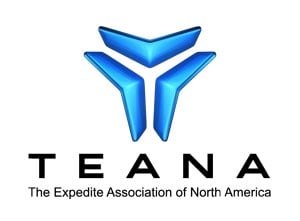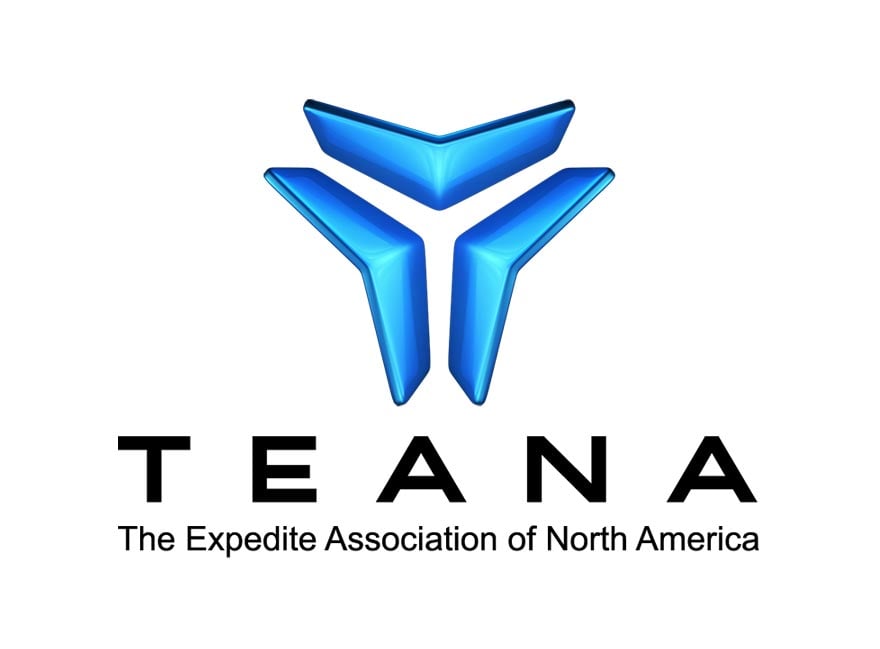November 16, 2021 | BY Hank Seaton
Regulatory and Legislative Update - November 2021
Share this article

Contents
FMCSA has extended its emergency declaration regarding COVID-19 through November 30. For the latest version and other guidance related to COVID-19 is available at www.fmcsa.dot.gov/COVID-19. Note that use of the declaration now requires monthly reporting by carriers.
Legislation
- Senate version of infrastructure bill becomes law
- Senate bill would revise hours-of-service rules, lower CDL age to 18
- House bill would pay carriers to assist during port congestion, national emergencies
Regulation and Enforcement
- OSHA issues vaccination/testing mandate for employees of larger companies
- FMCSA requires annual inspections of rear impact guards
- MCSAC to resume consideration of supply chain issues, regulation of small vehicles
- FMCSA allows armored car operation to weld front doors shut
Courts
- Supreme Court seeks Justice Department thoughts on AB 5 case
- Appeals court throws out federal GHG rule as it applies to trailers
Advocacy and Comment
Legislation
Senate version of infrastructure bill becomes law
President Biden on November 15 signed into law the Senate version of the infrastructure bill (H.R. 3684), which the House passed without amendment on November 5. The new law includes various provisions related to trucking, including a three-year pilot program to allow individuals aged 18 to 20 to drive commercial vehicles in interstate commerce subject to restrictions.
Although the law includes various other trucking provisions – including mandates for automatic braking systems on new vehicles and tighter rear underride guard standards – it does not include some highly controversial measures that were in the House-passed bill. For example, the final statute does not increase minimum liability insurance coverage for motor carriers. Nor does it mandate screening for sleep apnea or order a prompt restoration of public Compliance, Safety, Accountability (CSA) metrics.
The younger driver pilot apprenticeship program closely tracks the so-called DRIVE-Safe Act, which has been proposed several times in recent years. The program mandates a certain program of training with minimum on-duty and driving hours and conducted in trucks equipped with specified safety technologies. The apprenticeship program involves two tiers of specified experience with minimum durations that total 400 hours on duty, including 280 hours of time behind the wheel.
The apprenticeship program as enacted differs from the DRIVE-Safe Act in several notable ways, however. First, it is limited to three years. Also, at any given time the program will be limited to 3,000 trainees. The program is tighter in other respects. For example, driver trainers must be at least 26 years old and have at least five years’ experience. Finally, the hauling of hazardous materials is excluded – a restriction that was in some early versions of the DRIVE-Safe Act that was omitted in the bills currently introduced in Congress.
It is unclear when the apprenticeship program will begin. The Federal Motor Carrier Safety Administration (FMCSA) will need to issue some type of guidance to implement the program. However, the largest hurdle to quick action might prove to be the 3,000-participant cap as FMCSA would have to devise a process and information system to monitor the number of participants and to replace those who graduate or wash out of the program.
Because the rate at which apprentices will complete the program will vary widely, it is unknown how many new drivers will be added over the three-year period. The theoretical maximum per year if all drivers completed the program in the fastest time allowed by the hours-of-service rules and were immediately replaced with new apprentices when they exit would be about 32,000, according to an estimate from freight data analysis firm FTR Transportation Intelligence. However, in practice the number probably will be a fraction of that figure.
Aside from the braking and rear underride guard provisions, most of the trucking-related provisions are relatively non-controversial. Other provisions:
- Direct DOT to issue guidance to clarify the definitions and roles of brokers and bona fide agents and require DOT to consider the impact of technology and the role of dispatch services in the freight transportation industry;
- Require DOT, in consultation with the Department of Labor, to establish a Truck Leasing Task Force to examine common truck leasing agreements available to truck drivers, including port drayage drivers specifically. The Task Force would examine the impact of leasing agreements on the net compensation of drivers and the resources available to assist drivers in assessing the impacts of leasing agreements;
- Mandate a study of large commercial vehicle crash causation;
- Establish a grant program to help states with the immobilization or impoundment of passenger-carrying vehicles that are determined to be unsafe or fail inspection;
- Require a final rule on state inspection of passenger-carrying commercial vehicles;
- Mandate a report analyzing the cost and effectiveness of electronic logging devices and detailing the processes used by FMCSA to review logs; protect proprietary and personally identifiable information; and to provide the opportunity for a challenge or appeal to a violation notice related to an ELD;
- Order a review of FMCSA’s National Consumer Complaint Database; and
- Extend the authorization for the Motor Carrier Safety Advisory Committee through fiscal 2026 and add small carriers among those required to be represented on the committee. For complete information on the final infrastructure bill, visit https://www.congress.gov/bill/117th-congress/house-bill/3684.
Senate bill would revise hours-of-service rules, lower CDL age to 18
Sen. Mike Lee (R-Utah) has introduced still pending legislation (S. 3054) that would require FMCSA to change hours-of-service regulations for property-carrying commercial motor vehicles to provide more flexibility and would lower the minimum age for obtaining a commercial driver’s license (CDL) to 18. The bill would have the agency skip the rulemaking process and make various changes within 90 days of enactment. As introduced, the legislation would change HOS rules to:
- Increase the maximum driving time to 12 hours;
- Establish a maximum on-duty time of 14 hours during any 24-hour period;
- Allow 8 hours of consecutive off-duty time to satisfy mandatory rest requirements provided that the driver takes two to four rest breaks of 30 minutes each, depending on the number of hours driven; and
- Allow drivers to continue to their destinations if they are within 150 miles of it when they reach their driving or duty-time limits.
The bill also would require FMCSA to report to Congress on its processes for reviewing electronic logging device (ELD) logs and to protect proprietary information and personally identifiable information obtained from ELD logs. The report also would detail the process through which operations could challenge or appeal violations related to ELDs. Finally, S. 3054 would require a Government Accountability Office report on the costs and effectiveness of ELDs.
For information on S. 3054, visit https://www.congress.gov/bill/117th-congress/senate-bill/3054.
House bill would pay carriers to assist during port congestion, national emergencies
Similarly, Rep. Tracey Mann (R-Kansas) and 10 co-sponsors have introduced pending legislation (H.R. 5846) to establish a grant program to pay for-hire and private motor carriers to transport goods from ports during national emergencies or periods of high port congestion. The transport could be from the port to a final destination or “to a point that is easily accessible by another form of transport.” The grant program would apply during times when the president has declared a national emergency or when the Secretary of Transportation has determined that a port is congested by at least 50%. In the latter case, grants would cease once congestion at a port is less than 49% for at least 60 consecutive days. For information on H.R. 5846, visit https://www.congress.gov/bill/117th-congress/house-bill/5846.
Regulation and Enforcement
OSHA issues vaccination/testing mandate for employees of larger companies
As expected, the Occupational Health and Safety Administration on November 4 issued an emergency temporary standard (ETS) that generally requires employers with 100 or more employees to ensure that their employees are either vaccinated against the coronavirus (COVID) or undergo weekly testing. The rule was to be effective immediately, and compliance was required by January 4.
Almost immediately, however, the U.S. Court of Appeals for the Fifth Circuit stayed the mandate pending further litigation. Then on November 9, the American Trucking Associations, the state trucking associations for Texas, Louisiana, and Mississippi, and various other organizations involved in the supply chain filed suit in the Fifth Circuit challenging the ETS.
Even though trucking organizations are challenging the ETS, there are questions as to whether it applies to the largest single group of workers in trucking. Nowhere in the rule is any exemption for drivers mentioned. Moreover, one table in the final rule indicates that of nearly 880,000 total employees in for-hire trucking that work for carriers with 100 or more employees, nearly 740,000 are covered. However, a footnote indicates that the number of covered employees reflects only the total minus those who work exclusively outdoors. In addition to employees who work only outdoors and to those who work from home, the ETS excludes employees who do not report to a workplace where other individuals such as coworkers or customers are present.
Even stronger evidence came in a statement from the head of the cabinet department within which OSHA resides. A news report aired by a Philadelphia television station included a video clip of Labor Secretary Marty Walsh stating, “If you're a truck driver and you're outside, you're in a cab driving by yourself, this doesn't impact you.” For more information on the ETS, visit https://www.osha.gov/coronavirus/ets2.
FMCSA requires annual inspections of rear impact guards
FMCSA has issued a final rule adding rear impact guards to the list of items that must be examined as part of the required annual inspection for each commercial motor vehicle. CMV. The agency also amended the labeling requirements for rear impact guards and excluded road construction controlled (RCC) horizontal discharge trailers from the rear impact guard requirements. The final rule responds to rulemaking petitions and a Government Accountability Office recommendation. (See https://www.gao.gov/products/GAO-19-264.) Congress also mandated annual inspections of rear underride guards as recommended by GAO Congress in the fiscal 2020 appropriations act.
The final rule is effective December 9. For the Federal Register notice, visit https://www.federalregister.gov/d/2021-23796.
MCSAC to resume consideration of supply chain issues, regulation of small vehicles
FMCSA’s Motor Carrier Safety Advisory Committee is slated to meet December 6-7 to resume consideration of two topics it has already discussed: (1) support for supply chains related to the transportation industrial base and (2) potential regulation of the package and small goods delivery sector. The virtual meeting is open to the public, but advance registration is requested at www.fmcsa.dot.gov/mcsac.
FMCSA allows armored car operation to weld front doors shut
FMCSA has granted the application from Loomis Armored US, LLC for an exemption to allow the driver and passenger doors of the cabs of its specialized armored vehicles to be welded shut and two new doors to be added behind the cab. For the Federal Register notice, visit https://www.federalregister.gov/d/2021-22615.
Courts
Supreme Court seeks Justice Department thoughts on AB 5 case
The U.S. Supreme Court on November 15 asked the U.S. solicitor general – the Justice Department’s representative to the court – to file a brief expressing the views of the United States regarding the California Trucking Association’s challenge of California’s AB 5 law as it applies to motor carriers. Earlier this year, the U.S. Court of Appeal for the Ninth Circuit ruled that AB 5 is a law of general applicability that is not preempted by the Federal Aviation Administration Authorization Act of 1994 (F4A). However, the appeals court also stayed the effectiveness of that decision pending a resolution at the Supreme Court.
Seeking the views of the U.S. government was one of three courses of action the Supreme Court generally would take when presented with a petition for review. Had the Supreme Court decided to let the Ninth Circuit decision stand, the state of California could have immediately to enforced AB 5 on motor carriers, which would mean that leased owner-operators would no longer be allowed to operate in the state. Had the court agreed to hear the case, the status quo would have remained in place pending a final ruling. Ultimately, the court will take one of those two courses of action, so one of the consequences of its November 15 action is to delay the final resolution, perhaps by months.
In early October, the Supreme Court asked the acting solicitor general to file a brief in another case involving F4A. That case, which involves C.H. Robinson, concerns whether a state tort liability claim filed after a highway crash qualifies under F4A’s “safety exception,” which allows state regulation.
Many observers expect the court to take the CTA case as the Ninth Circuit decision conflicts with a 2016 First Circuit ruling that invalidated a restrictive ABC test in Massachusetts. However, the Supreme Court last month declined to review a case that involved application of California’s ABC test to motor carriers. The court’s latest action, however, strongly suggests that it considers the CTA case to be one it might ultimately consider. The Supreme Court on November 15 also asked the solicitor general for views involving two airlines’ challenge of California’s application of its meal and rest break rules to flight attendants. Both cases involve the extent to which the prohibition against state regulation of rates, routes, and services prevents states from requiring federally regulated carriers to abide by laws and regulations that apply generally to all employees.
Appeals court throws out federal GHG rule as it applies to trailers
The U.S. Court of Appeals for the District of Columbia Circuit has invalidated all portions of a 2016 Environmental Protection Agency rule on greenhouse gases in commercial vehicles that apply to trailers. The court noted that the Obama administration rule was based on a statute that authorized EPA to regulate “motor vehicles.” In the same rule that was issued jointly with the National Highway Traffic Safety Administration, NHTSA issued fuel efficiency standards for trailers based on a statute allowing it to regulate “commercial medium-duty or heavy-duty on-highway vehicles.”
The appeals court decision rested on quite a simple premise. “Trailers, however, have no motor,” the court concluded. “They are therefore not ‘motor vehicles.’ Nor are they ‘vehicles’ when that term is used in the context of a vehicle’s fuel economy, since motorless vehicles use no fuel.” For the appeals court opinion, visit https://bit.ly/GHG-Trailers.
Advocacy and Comment
Cheer up! We may be in better shape than we feared
As the above report shows, we finally have a highway infrastructure bill. Importantly, omitted from the finished product were troublesome issues like increasing insurance minimums, federal adoption of AB5 and resurrection of CSA 2010 which were feared as possible amendments to the appropriations bill.
As noted, the future of the independent contractor model remains in doubt. The split in the Circuits and the stay pending the Supreme Court’s decision on cert. has shifted the fight to the courts and is the only thing precluding enforcement of California legislation and similar acts in other states which will destroy the model and greatly exacerbate the driver and equipment shortage. This month’s publication was delayed awaiting the Court’s decision on the appeal of AB5 and a CH Robinson case. Both were referred to the Solicitor General for an opinion, leaving these issues in limbo and yet to be determined.
If the Supreme Court does not decide to ultimately determine the future of the owner operator independent contractor model, the debate will default to the Department of Labor and other administrative agencies where the importance of the small business issue, the supply chain problems and driver shortages will be important.
Supply chain disruption and the causes or the effect of the perceived driver shortage are hot topics which will be considered by FMCSA’s MCSAC in December. As was done in a response to DOT’s request for comments by 9 trade associations, the case must be made that the attenuated overseas supply chain, port bottlenecks and uncompensated waiting times exacerbate the driver shortage. These supply chain issues, and threats to the owner operator model are precipitating the driver shortage which is not the cause of the problem.
The MCSAC is taking up the gap in federal safety regulations between vans and sprinters on the one hand and straight trucks and semis on the other is of particular importance.
The difference between safety regulations governing vehicles less than 10,001 gvw creates inconsistencies and confusion in the application of federal versus state laws which results in the characterization of the “home delivery model” as the “Wild West” – a new and apparently lawless territory. While MCSAC has no authority to implement new rules, these meetings may shed light on the chronic and systemic problems of this growing segment of the supply chain.
Finally, the infrastructure bill creates administrative forums for addressing a number of issues important to the industry and provides opportunities for small business which warrants greater participation.
Our Process lorem ipsum dolor sit amet, consectetur adipiscing elit. Nunc vulputate libero et velit interdum, ac aliquet odio mattis.
Value prop lorem ipsum
Ut posuere hendrerit nisl metus neque. Facilisis quis adipiscing a molestie. Tempor turpis tincidunt nulla diam in. Nec etiam ut neque placerat mauris nulla. Semper hendrerit at urna orci in faucibus sit lacus. Tincidunt fermentum consequat.
SEE OTHER CITIES WE SERVICE IN THIS STATE
Value prop lorem ipsum
Ut posuere hendrerit nisl metus neque. Facilisis quis adipiscing a molestie. Tempor turpis tincidunt nulla diam in. Nec etiam ut neque placerat mauris nulla. Semper hendrerit at urna orci in faucibus sit lacus. Tincidunt fermentum consequat.
SEE OTHER CITIES WE SERVICE IN THIS STATE
Related Blog Posts

Regulatory and Legislative Update - August 2022
Contents FMCSA has extended its emergency declaration regarding COVID-19 through August 31, 2022. For the latest version and other guidance related to COVID-19 is available at www.fmcsa.dot.gov/COVID-19. Note that use of the declaration now requires monthly reporting by carriers. Courts Appeals court upholds the latest changes to HOS rules Appeals court overturns ruling for Schneider in classification case Regulation and Enforcement Registration...

Regulatory and Legislative Update - December 2021
Contents FMCSA has extended its emergency declaration regarding COVID-19 through February 28. For the latest version and other guidance related to COVID-19 is available at www.fmcsa.dot.gov/COVID-19. Note that use of the declaration now requires monthly reporting by carriers. Legislation House passes ocean shipping reform bill House passes Build Back Better Act House bill would federalize major crash lawsuits, criminalize staging of crashes...

Regulatory and Legislative Update - February 2022
Contents FMCSA has extended its emergency declaration regarding COVID-19 through February 28. For the latest version and other guidance related to COVID-19 is available at www.fmcsa.dot.gov/COVID-19. Note that use of the declaration now requires monthly reporting by carriers. Regulation and Enforcement Safety fitness procedures apparently are next on FMCSA’s regulatory agenda FMCSA adopts new vision standards for commercial drivers FMCSA...

Regulatory and Legislative Update - March 2021
Contents FMCSA has extended its emergency declaration regarding COVID-19 through May 31. For the latest version and other guidance related to COVID-19 is available at www.fmcsa.dot.gov/COVID-19. Regulation and Enforcement DOL postpones effective date on independent contractor rule DOL withdraws opinions sleeper berth pay, independent contractor status SBA takes steps to improve PPP access for very small businesses FMCSA postpones effective date...

Regulatory and Legislative Update - October 2021
Contents Regulation and Enforcement DOT seeks input on ‘supply chain resilience’ in freight and logistics FMCSA rule to link clearinghouse data to CDL Reporting requirement for FMCSA COVID declaration kicked in October 1 FMCSA renews steel company’s exemptions from HOS and securement rules Oak Harbor Freight Lines seeks exemption on driver training instructors Keep Truckin seeks windshield exemption Legislation Infrastructure bill remains in...

Regulatory and Legislative Update - June 2023
Contents Regulation and Enforcement Labor Department nominee concedes federal ABC test is up to Congress Volpe Center supporting FMCSA in test of wireless inspections CVSA announces Operation Safe Driver Week for July 9-15 Women of Trucking Advisory Board to meet June 29 FMCSA launches anti-human trafficking campaign Brenna Marron to head FMCSA’s government affairs office Legislation House T&I Committee approves package of bills related to...

Regulatory and Legislative Update - August 2023
Contents Regulation and Enforcement FMCSA to revisit state regulation of drivers’ rest breaks Three devices removed from list of registered ELDs FMCSA updates technical guidance on ELDs Brian Stansbury appointed FMCSA’s chief counsel FMCSA rejects driver’s requested exemption from multiple HOS requirements Legislation Senate DOT funding bill would block younger driver program mandates Senate bill would establish a carrier selection standard...

Regulatory and Legislative Update - April 2021
Contents FMCSA has extended its emergency declaration regarding COVID-19 through May 31. For the latest version and other guidance related to COVID-19 is available at www.fmcsa.dot.gov/COVID-19. Regulation and Enforcement DOL proposes to withdraw rule on worker classification DOT rescinds Trump administration’s changes on rulemakings, guidance CVSA to hold enforcement events in May and July Bus operator seeks exemption from full clearinghouse...

Regulatory and Legislative Update - March 2022
Contents FMCSA has extended its emergency declaration regarding COVID-19 through February 28. For the latest version and other guidance related to COVID-19 is available at www.fmcsa.dot.gov/COVID-19. Note that use of the declaration now requires monthly reporting by carriers. Regulation and Enforcement FMCSA removes x-ray exam from definition of ‘medical treatment’ FMCSA drops mandate that drivers disclose traffic violations to employers FMCSA...

Regulatory and Legislative Update - January 2025
Contents Regulation and Enforcement FMCSA expands crash preventability review criteria FMCSA to highlight upcoming SMS changes in January 16 webinar Compliance date pushed back for certain provisions of broker/forwarder rule Trump labor pick, port dispute stance raise questions about labor policy FMCSA proposes to waive hazmat endorsements for certain limited operations Company denied exemption for limited interstate driving by younger drivers...

Regulatory and Legislative Update - November 2022
Contents Regulation and Enforcement DOL proposes to reverse Trump-era rule on worker classification under FLSA FMCSA’s COVID-19 emergency declaration ends FMCSA rejects SBTC exemption related to the language skills requirement School bus group receives CDL testing exemption regarding engine compartments FMCSA renews UPS exemption from certain ELD requirements FMCSA renews ELD exemption for motion picture-related drivers Legislation House bill...

Regulatory and Legislative Update - February 2025
Contents Regulation and Enforcement FMCSA reopens comment period on broker transparency Truck Leasing Task Force issues final report opposing lease-purchase programs DOT appoints several FMCSA officials FMCSA withdraws several pending rulemaking following regulatory freeze Nomination hearing for Trump’s DOL pick slated for February 19 Trump orders 10-for-1 deregulation initiative EPA refers Biden administration’s CARB waivers to Congress...
WHAT IS HOT SHOT TRUCKING? AKA HOTSHOT TRUCKING
Modern business is all about strict timelines. Whether your field is manufacturing, extraction, retail, or research and development, your operations are bound to rely on activities that operate in tandem. The most minor of supply shortages can throw these activities off, potentially costing you thousands of dollars just for a few hours' delay. Success thus hinges on your ability to right the ship as quickly as possible after a supply shortage arises.
Industries We Serve
Modern day hot shot trucking provides the speed and exclusivity you need to meet the most demanding and time-sensitive shipping requirements. We use every resource, avenue, and channel available to ship your freight by ground or air. Designed specifically to address supply and distribution problems that arise without warning, hotshot trucking tactics involve coordinating a network of carriers in a variety of locations. By calling on the vehicles closest to your supply or distribution points, hotshot brokers can fill any sudden gaps in your supply network almost as soon as they happen. This minimizes the disruption to your business and allows you to quickly return to ordinary operations, weathering the storm without skipping a beat.
Automotive
The automotive supply chain already has significant challenges. Don’t let malfunctioning equipment stop the production line. Step on the gas with HotShotTrucking.com’s suite of services that will get you back in the fast lane. With HotShotTrucking.com, companies are devising shipping strategies to swiftly deliver critical parts and equipment — whether it's ground expedite service with sprinter vans, box trucks and 53-foot tractor trailers or air freight and air cargo.
Aviation & Aerospace
Every moment a commercial airliner sits on the ground, it costs an airline money. Expedited freight services by HotShotTrucking.com can get you back in the air with prompt delivery of parts and equipment throughout North America. We are equipped with the expertise to navigate the complexities of shipping jet engines and other types of loads, and our network of hot shot drivers has extensive experience transporting aviation assets.
Construction
One shipping delay can snowball and cause delays throughout your entire project. You need an experienced 3PL provider who understands the construction industry and has the logistical reach to deliver your freight on time, anywhere. That 3PL partner is HotShotTrucking.com. Whether in the air or on the ground via truck and trailer, we can connect companies to expedited freight services for the prompt delivery of parts and equipment throughout North America.
Mining & Metals
From cranes to chemicals to excavators to conveyor belts, HotShotTrucking.com has the experience and industry know-how required for shipping sensitive, oversized, and hazardous equipment. Third-party hot shot trucking and logistics providers such as HotShotTrucking.com specialize in devising and implementing innovative shipping solutions, ensuring mines can swiftly return to operation. We’ll pick up your shipment, deliver it to the airport and receive it at the other end – providing hand-carried service as necessary or required.
Manufacturing
Every moment a manufacturing facility or factory sits idle costs a company money because of the high costs involved. With many manufacturers building to only just-in-time production rates, any disruption threatens parts and vehicle inventories. This is where the speed and expertise of freight services from HotShotTrucking.com can make a difference throughout the entire manufacturing supply chain. We do all the logistical legwork to find the optimal solution for your job, whether it's an exclusive air charter or expedited ground shipping.
Telecommunications
From servers to cell towers, information, voice, and data must flow to keep businesses, production, and the public online and connected. When equipment goes dark, depend on HotShotTrucking.com to get your systems flashing green again. This is where the speed and experience of trucking and freight services from HotShotTrucking.com can help. Our hot shot truck network excels at the prompt delivery of parts and equipment throughout North America.
Oil & Gas
The oil and gas industry faces challenging conditions in offshore and onshore oil rigs, often in remote locations with limited infrastructure. Don’t let oil pumps or pipelines sit idle waiting for equipment. By having the right plans, parts, people, and logistics partner like HotShotTrucking.com, you can effectively mitigate plant or pump downtime, unscheduled disruptions, and equipment failures.
Cost of Urgent Shipping
Which of our specialized shipping services best fits your needs?
Blog and Resource Center
How AirFreight.com Solved a PGA Tour Shipping Emergency
Learn how AirFreight.com located a lost shipment and helped save the PGA Golf Tour.
How AirFreight.com Saved The Farm By Solving A Major Shipping Delay
Learn how we saved a Montana-based artisanal farm thousands of dollars by expediting a shipment of perishable goods.
Expedited Shipping Vendor Comparison
We’ve done the research for you. This vendor comparison sheet breaks down how AirFreight.com stacks up against the competition.

talk to an expeditor now
Get a Quote in Minutes for Your Time-Critical Freight Needs
GET A QUOTE
